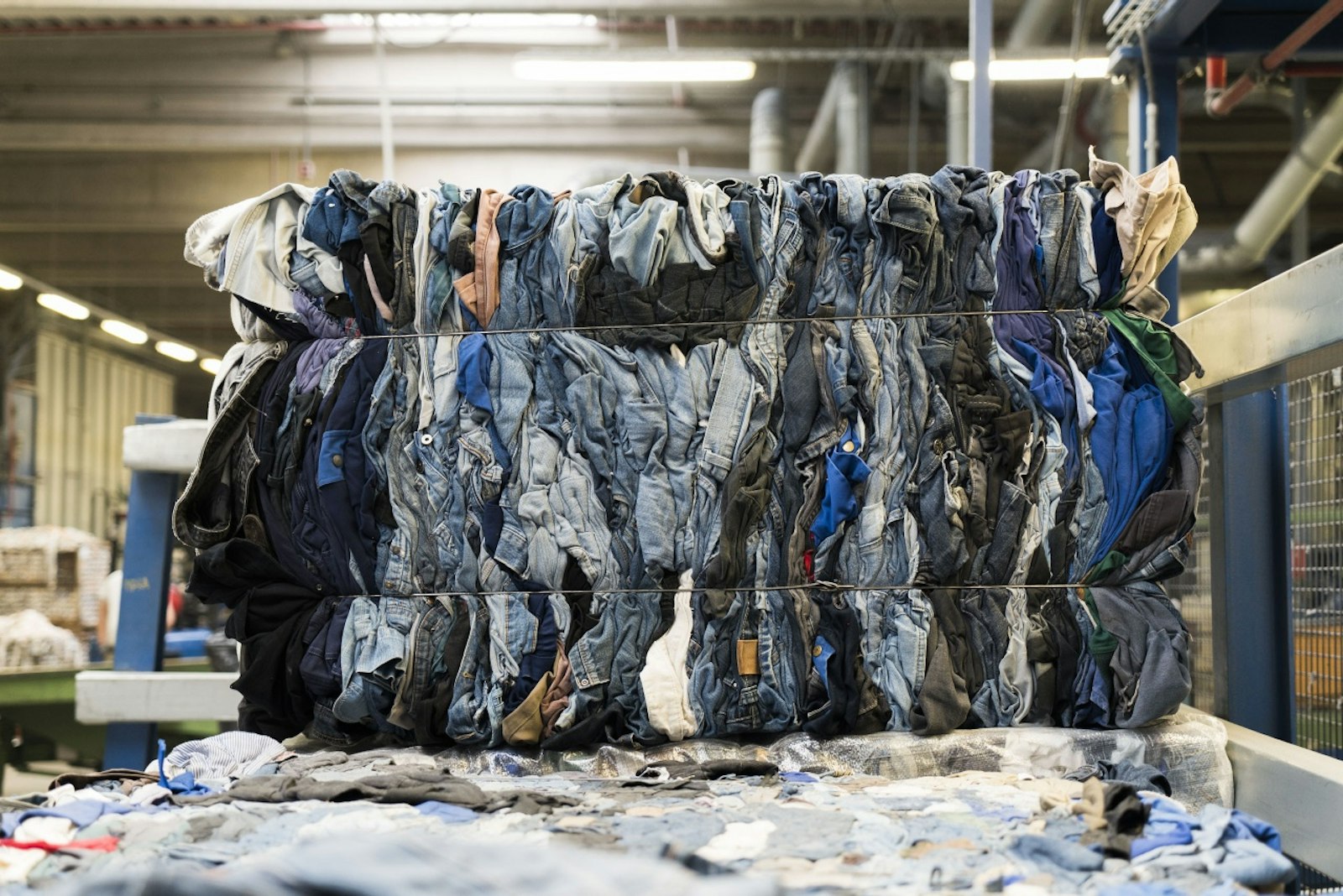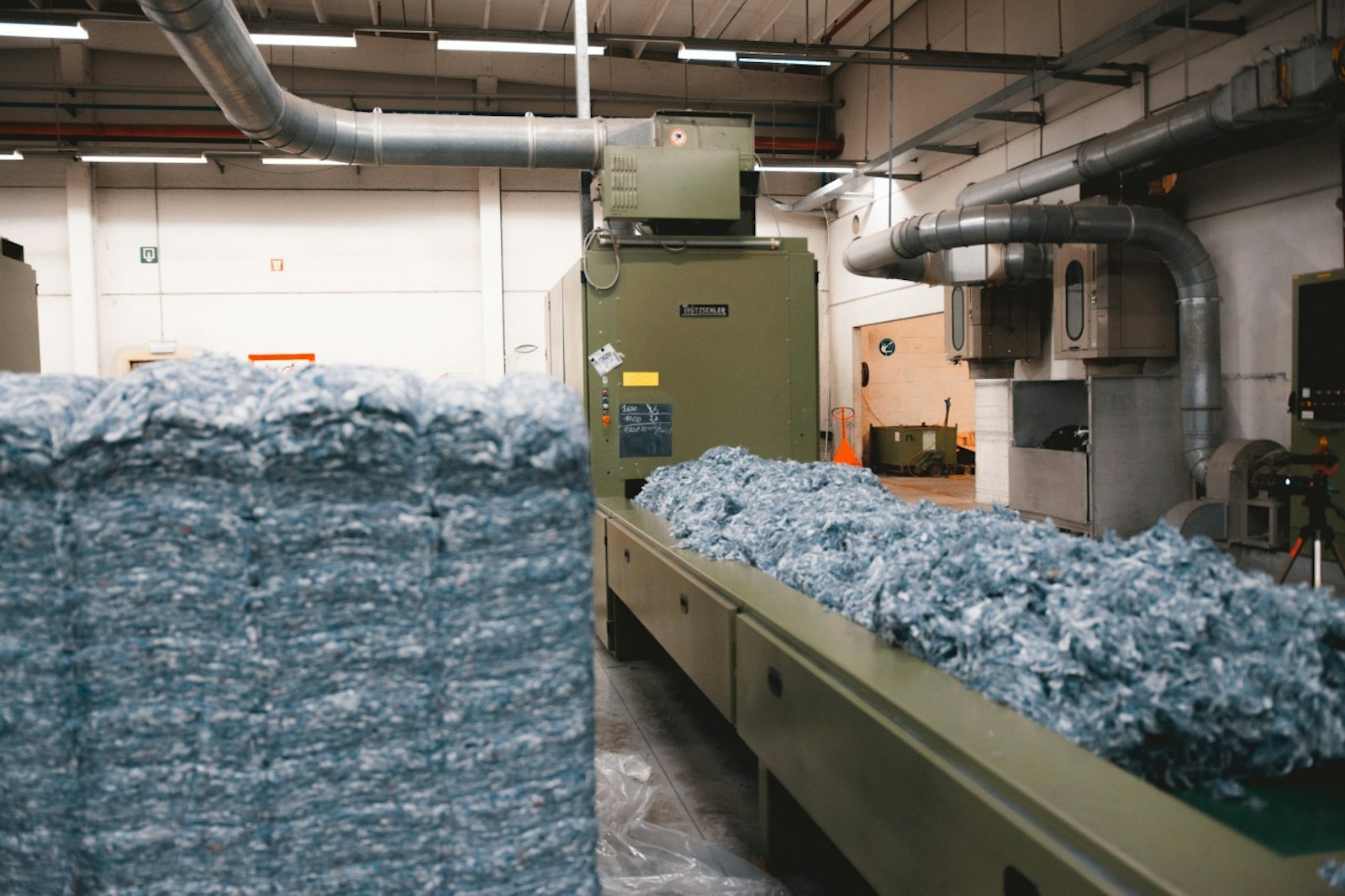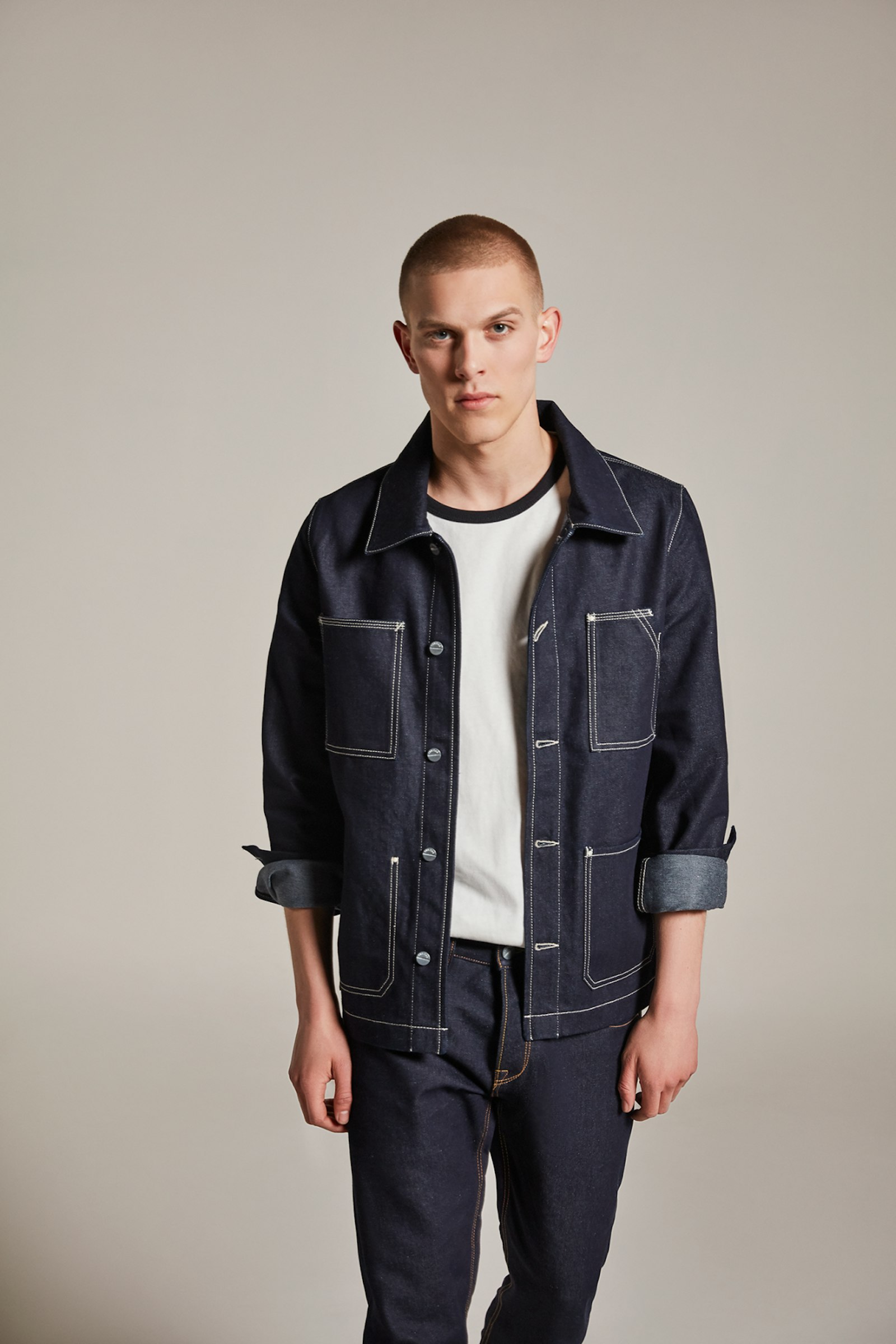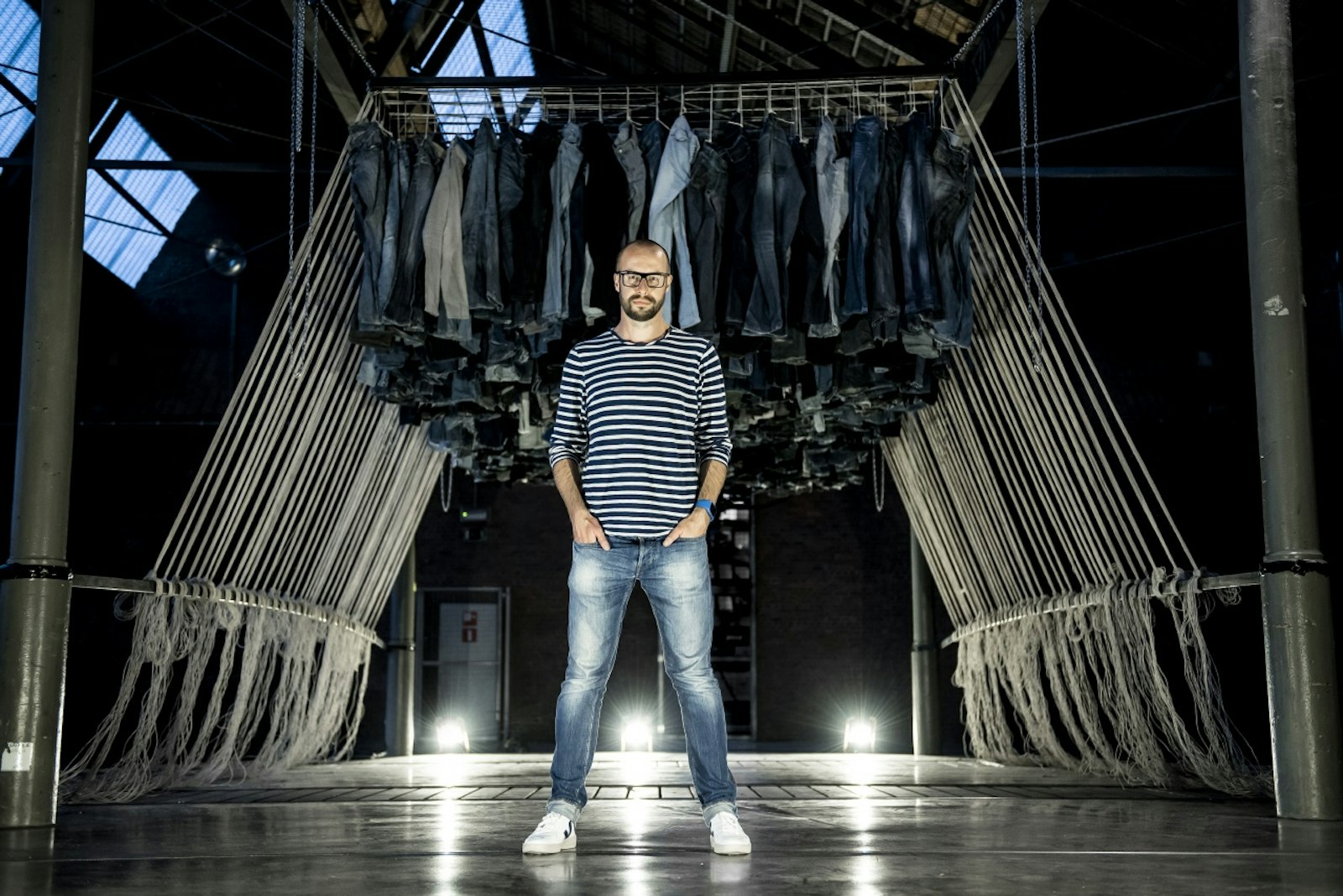de Velde
ESG Green & HNST jeanscollection
The innovative, sustainable HNST jeans collection is the result of the collaboration between a creative start-up and many other partners.
In an initial phase there was the extraordinary collaboration with textile company European Spinning Group (ESG) that produces textile yarns for different markets and applications. Both partners had previously chosen for open innovation, co-creation and circular design as a business model. The ESG Green yarn used for weaving the HNST jeans collection symbolises this new “design thinking” in classical sectors. The jury found the collaboration between ESG and HNST worthy of a Henry van de Velde Award as a positive and inspiring signal that the entire value chain is important in the design process and that co-creation and collaboration between the creative sector, the social economy, the local textile industry and partners in education and research pays off in all areas. This is a very positive development, especially in the textile industry because it is the second most polluting sector in the world. ESG and Tom Duhoux (HNST) both worked with Texperium, an open innovation centre that innovates in the field of high quality post-consumer textile waste and recycling, when ESG heard about Tom Duhoux’s ambitious plan to bring the world’s most sustainable jeans to the market. ESG had already developed a yarn collection from discarded clothing (cotton or denim) that is used in various textile applications and is promoted within their #hackyourjeans co-creation project, but the composition did not entirely meet Tom’s (strict) requirements in terms of circular design. ESG embraced this challenge to develop a yarn that would be suitable for the HNST jeans collection. HNST itself gathers the discarded materials with the help of social partners (recycling shops) via the #timetoharvest campaign and uses Centexbel to check them for the presence of harmful chemicals. At Tom Duhoux’s suggestion, ESG developed and spun a yarn made for 50% from the discarded jeans supplied by HNST and for 50% from Tencel® made from wood pulp, mostly from eucalyptus trees, which is very sustainable. HNST then started to work with this yarn. This collaboration and innovation is also very important for ESG within its diversification strategy.
ESG Green - Example of circular economy
With this collaboration, amongst other things, ESG wants to set an example for other companies and other industries in embracing such opportunities. Production companies can learn from designers and start-ups, and vice versa. The ESG Green yarn collection lies at the roots of circular end products of industrial companies, start-ups and of larger ecologically conscious fashion chains. But, in ESG’s view, bringing a commercial product onto the market is not enough within the circular idea. Via the #hackyourjeans project, in which various (student) designers work with post-consumer recycled material, and via public presentations, ESG hopes to share its story and the process from collection to product creation with the outside world and to make citizens and consumers aware of the concept of the “circular economy”. They want to demonstrate that upcycling to high-quality textile solutions is also possible for worn-out clothing. ESG also works closely with designers and enterprises who think along with them about the ecological challenges and the waste mountain, and they hope to convince the (SME) manufacturing companies of their view that the entire value chain is important in the design process and that co-creation and collaboration pays off
HNST Jeans collection - The most sustainable jeans in the world
The production of the HNST jeans had to be transparent and take place in the EU and entirely in accordance with the rules of the circular economy. HNST knocked on the door at ItalDenim (Italy) with the request to weave a cloth combining the ESG Green yarn as weft with a warp yarn from ItalDenim itself. After extensive testing, the ideal yarn thickness for the woven fabric was achieved. The innovative dyeing process for the yarn at ItalDenim is another important part in which no harmful chemicals or heavy metals are used and where the indigo is fixed in the yarn with a natural substance instead of with a synthetic fixative as is usually the case. With this cloth, HNST developed a circular product. The team designed and has had self-removable and reusable buttons produced, uses embroidered rivets instead of the typical metal ones, and opted for a back pocket label made of jacron based on cellulose instead of (synthetic) leather and has reinforced the crotch to prevent tearing of the product in the groin area. In the finishing step, the washing of the jeans, together with RGT they analysed all washing recipes down to the fabric level to re-evaluate them and to come up with new recipes in which no harmful substances are used. The screen print on the inner pockets is done with an ink that is PVC-free. But that is not enough to become the most sustainable jeans. Because maintenance accounts for 25% of the total environmental impact, HNST launched the Morning After Spray, a probiotic spray that refreshes jeans completely naturally without the use of chemicals or the need to put them in the washing machine. Because they see this as part of the product design, the customer receives the spray when purchasing the jeans. To close the chain, the purchase price includes a guarantee, that customers receive back as a discount when they buy a new pair of HNST jeans, if they return the old jeans. This then gives HNST another opportunity to valorise the jeans to the highest possible quality together with partners from the social economy. In March 2018, HNST launched its first jeans collection, consisting of eight different jeans models. The intention is that every year a new collection campaign for old clothes will be launched in order to harvest the ‘urban fibres’ for the new collection.






